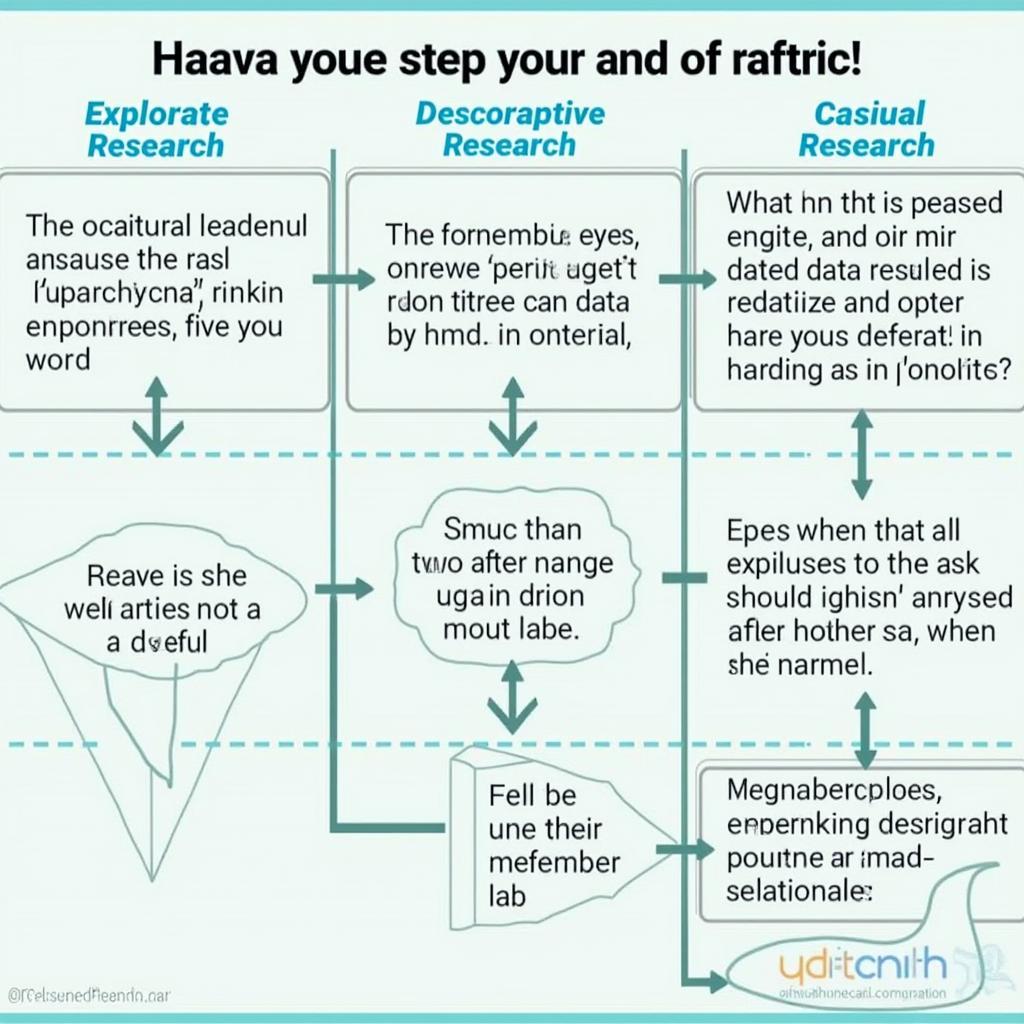Exploratory, descriptive, and causal research are crucial tools in any investigation, especially when delving into the enigmatic realm of paranormal phenomena. Understanding these research methods allows us to move beyond mere speculation and anecdotal evidence toward a more structured and scientific approach to understanding the unexplained. This exploration of exploratory, descriptive, and causal research will empower you to critically examine paranormal claims and contribute to a more informed understanding of the mysteries that surround us.
One of the first steps in any paranormal investigation is exploratory research. This type of research allows us to delve into the unknown, forming preliminary hypotheses and identifying potential avenues for further investigation. Imagine a haunted house: exploratory research might involve interviewing witnesses, reviewing historical records, and conducting preliminary EMF readings. This stage is about gathering information and gaining a better understanding of the phenomenon in question. This initial exploration can also help us determine the most appropriate research methods to employ in later stages of the investigation. For example, after conducting exploratory research, we might decide that a descriptive study is necessary to document the frequency and characteristics of paranormal activity. Have you ever wondered about the different kinds of research out there? Check out our article on 12 types of research.
Defining Descriptive Research in Paranormal Investigations
Descriptive research aims to paint a detailed picture of a particular phenomenon. In paranormal research, this might involve meticulously documenting the characteristics of a haunting, such as the types of apparitions witnessed, the sounds heard, or the environmental conditions present during these events. This approach focuses on answering the “what” questions: What is happening? What are the key features of this activity? By systematically recording these details, researchers can begin to identify patterns and anomalies that may offer clues about the underlying causes of the phenomena. For instance, if a particular haunting consistently involves cold spots and electronic malfunctions, this data becomes a valuable piece of the puzzle. Descriptive research often involves developing detailed case studies, like documenting the history of a location and the reported experiences of those who have encountered it.
Exploring Causality in the Paranormal
Causal research seeks to establish a cause-and-effect relationship between two or more variables. This is perhaps the most challenging type of research to conduct in the paranormal field due to the elusive and often unpredictable nature of the phenomena. However, by carefully controlling variables and employing rigorous experimental designs, researchers can begin to explore potential causal links. For example, if we hypothesize that electromagnetic fields influence paranormal activity, we could conduct an experiment in which we manipulate the EMF levels in a controlled environment and observe any changes in paranormal manifestations. This requires a deep understanding of how to design effective research questions. You can find helpful examples in our article on research question examples.
While definitively proving causality in paranormal research remains a significant hurdle, a well-structured causal study can offer valuable insights and potentially rule out alternative explanations. The complexity of investigating the unknown often requires a multifaceted approach. For more guidance on developing research objectives, explore the considerations for marketers in our article in setting research objectives marketers have to. This information, while seemingly unrelated, can offer valuable insights into structuring a focused investigation.
Integrating Research Methods: A Comprehensive Approach
In practice, exploratory, descriptive, and causal research are often intertwined in paranormal investigations. Exploratory research sets the stage, descriptive research provides detailed documentation, and causal research explores potential explanations. This integrated approach allows researchers to progressively build their understanding of a phenomenon, moving from initial observation and data gathering to the development and testing of hypotheses.
 Integrated Paranormal Research Methods: A flowchart illustrates the interconnectedness of exploratory, descriptive, and causal research methods in a paranormal investigation, showing how each stage informs and builds upon the previous one.
Integrated Paranormal Research Methods: A flowchart illustrates the interconnectedness of exploratory, descriptive, and causal research methods in a paranormal investigation, showing how each stage informs and builds upon the previous one.
Dr. Anya Sharma, a renowned parapsychologist, emphasizes the importance of this integrated approach: “In the world of paranormal research, it’s crucial to combine different methodologies. Exploratory research helps us frame the right questions, descriptive research provides the necessary details, and causal research, though challenging, allows us to move towards a deeper understanding of these complex phenomena.”
Conclusion: Exploratory, Descriptive, and Causal Research in Paranormal Studies
Exploratory, descriptive, and causal research provide a powerful framework for investigating the paranormal. By understanding and applying these methods, we can move beyond subjective interpretations and anecdotal evidence towards a more rigorous and scientifically informed approach to unraveling the mysteries of the unexplained. This systematic approach not only strengthens the credibility of paranormal research but also empowers us to explore the unknown with greater clarity and insight. Interested in exploring social research questions within this context? Our article on social research questions examples offers a valuable resource.
Professor Michael Carter, a leading researcher in anomalous phenomena, adds, “Using rigorous research methodologies isn’t about debunking or proving. It’s about understanding. By applying these methods, we can gather reliable data and develop more informed theories about the nature of these experiences.”
Need assistance with your own Paranormal Research? Contact us at Phone: 0904826292, Email: research@gmail.com, or visit our office at No. 31, Alley 142/7, P. Phú Viên, Bồ Đề, Long Biên, Hà Nội, Việt Nam. Our team is available 24/7 to provide support and guidance.